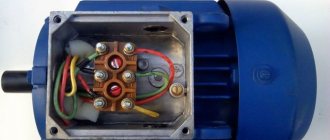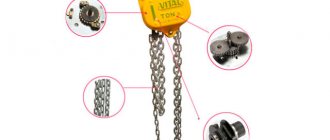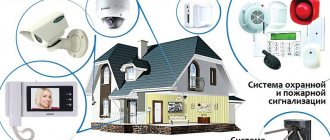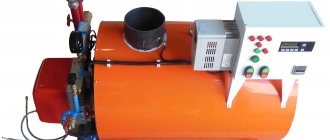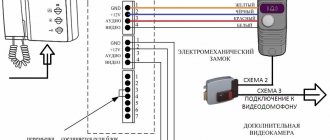Remote control device
A household remote control is a box with buttons on the front.
The remote control operates on batteries and sends signals in the form of infrared rays (0.75 - 1.4 microns). The wave is not recognized by a person, but is perceived by the receiving mechanism. The design contains a packaged or packaged microcircuit, which is located on a dielectric plate and filled with a polymer thermoplastic resin. The universal remote control panel has the following basic parts:
- power key, device selection;
- volume control and channel switching, date and time settings;
- numeric keys for entering numbers;
- programming buttons;
- joysticks for menu navigation;
- keys, the purpose of which is chosen by the user independently;
- LCD or touch screen showing current information.
Devices with many functions require a complex system with wave frequency regulation, which also protects the channel from interference and encodes the commands being sent. Digital conversion is used by the remote control chip and decoding by the receiver.
How the universal remote control works
Many of you are forced to use 2 remote controls to control your TV: one to control the TV and one to control the set-top box. In this project we will combine these 2 smartphone-based remote controls so that you can use it to fully control the TV without using additional remote controls.
Using the Arduino Uno board, it is quite easy to implement the processes of encoding and decoding the necessary signals in this universal remote control. For the convenience of manufacturing such a device, it is advisable to construct a homemade shield (extension board) for the Arduino board as shown in the following figure. The shield will consist of a TSOP IR 1838T receiver (receiver), an infrared LED and a Bluetooth module (HC-05).
You can either make the shield below or simply connect these components to the Arduino Uno board as shown in the device diagram below.
Most infrared devices operate at 38 kHz, which is why we chose the 1838T for our project. At the same time, when considering the principles of operation of devices with infrared communication, one should remember that they do not have logical ones and zeros in the direct understanding of these concepts. Both one and zero in these devices are encoded by a set of special pulses as shown in the following figure. The essence of these encoding processes is described in the NEC protocol.
The operating principle of the universal remote control we are designing will be as follows. First, the smartphone, using an Android application, transmits the signal to the Arduino board using Bluetooth technology, then the Arduino receives it using a TSOP-IR receiver (1838T) and analyzes it. The Arduino then commands the infrared LED to blink in a specific algorithm (pattern) depending on which button is pressed in the Android app on the smartphone. This signal is received by the TV or set-top box, which executes the command encoded in the signal.
But before carrying out this project, we must decode the signals from the remote controls that we want to replace. This process is discussed later in the article.
Operating principle of the remote control
More often, devices use one frequency modulation (radiation from an LED element), to which the receiver and remote control are tuned. Frequency values with constant amplitude are usually unchanged - these are 36, 38 or 40 kHz (Button, Canon, Pro Black). 56 kHz indicators are rarely used (Sharp, Runva, Doorhan). Bang & Olufsen products operate at 455 kHz, which is a rare characteristic.
If the frequency of the receiver and transmitter do not match, the remote control will work, but its sensitivity will decrease. Several modulated bursts of pulses create a coded message, and the receiver contains a demodulator, a filter circuit, and a frequency detector.
Previously, only the basic commands of the controlled device were placed on the remote control; most of the controls were located on the body of the household appliance. The situation has changed: ventilation, gates, lighting, and traffic light equipment can only be controlled using a remote device.
1.Search by remote control model.
This method is relevant if you still have an old remote control. Take a close look at the remote control body, front and back. Also, some remote control numbers are located under the battery compartment cover. The number consists of letters and numbers. See the example in the pictures below.
Enter the number you found on your remote control into the search bar on our website. Be sure to enter in Latin letters and follow dashes and spaces. Next, click "FIND". The website will display remote controls based on your request.
And the search will give you the remote control you need.
Types of wireless remote controls
Built-in remote control
The devices are powered by 2 - 4 removable batteries of type AA, AAA, less commonly used 9 V Krona batteries. The IR LED requires 2.5 volts to operate, so several elements are required to ensure the remote control level. Experts recommend alkaline or salt batteries.
Depending on the type of power supply, there are remote controls:
- autonomous;
- devices powered from a 220 V electrical network or with a 360 V converter.
They produce portable devices that are often used in everyday life for wireless control of lamps, chandeliers, gate opening, tail lift operation, and other switches. The built-in IR remote control is installed to control complex smart home systems or installed in industrial complexes to control, for example, a crane.
Control devices are classified according to functionality:
- with a limited number of teams;
- with a choice of the number of orders (universal option, for example brand ABCD);
- with the ability to train a set of signals (trainable models, for example, DC V).
ABCD remote control
DC V remote control
Communication with the controlled equipment is established mechanically or wired, using a radio channel, WI-FI, ultrasonic and infrared methods. The Trodfrey driver controls the light in a home remote control, and Wireless USB replaces standard wired transmissions.
Remote control diagram
An encoding method is used to distinguish the commands of the transmitting block. Before broadcasting the signal, the remote control issues one or more synchronous packets so that the touch receiver sets up the receiving circuit and synchronizes with the transmitter in phase and degree of sensitivity.
Two schemes have been developed for this purpose:
- The first system is used in the Philips remote control (in accordance with the RC5 and RC4 protocols). The sending of signal 0 is supplemented by the number 1, and sending 1 requires the addition of 0. Signal 001 arrives in the form of 010110 and is read sequentially, and a simulated packet is sent into space.
- The authors of the second encoding scheme are representatives of Sony. One is transmitted in a modulated burst, and zero means a pause. Zero transmits encoded information at the same time indicator of one.
Studies have shown that the duration of signals varies by time deviations at the level of +-10%. Transmitted packets are modulated by changing the frequency, which affects the operating range of the device.
How to make a remote control with your own hands
4-channel remote control circuit
The remote control is a device that can be assembled by converting a smartphone. You need to purchase infrared diodes or remove them from unnecessary remote controls (2 pieces) and a plug from old headphones. For assembly you will need sandpaper, electrical tape and superglue; the work is carried out with wire cutters and a soldering iron.
The following steps are performed for manufacturing:
- On one side, the elements of the IR diodes protruding from the sides are cleaned using sandpaper.
- The diodes are connected using superglue so that the ground side is inside.
- The legs of the diodes need to be bent and the excess protrusions removed with pliers.
- The anodes are soldered to each other using a soldering iron.
- Similar processing of the second diode is carried out;
- Both LEDs must be connected to the plug lugs without observing polarity.
- The soldering area is coated with glue and protected with insulating tape.
The connection mode is done via IR Port or WI-FI, IR Blaster. The TV modification is selected and the action is confirmed. The converted smartphone is sent to the IR receiver of the home screen, and the functions are controlled.
Smartphone as a remote control
Another option for a remote control for almost any device is to use a smartphone as a control device. At the same time, it may or may not implement signal transmission in the IR range ( IrDA
). In the latter case, control is carried out via Bluetooth or Wi-Fi. The only limitation is that the controlled device must also support these information exchange protocols, which is not implemented on all equipment.
More interesting as a remote control is the version of a smartphone with an infrared port. Let's consider this using the example of the Xiaomi Redmi 3
Daevoo
TV .
We will need to install a special application from Google Play
.
It can be anything, the main thing is that the list of supported equipment includes a model of the control object. For this phone with the MIUI
, it is called
Mi Remote
(Russian language is present).
Scope of use of remote control
A universal remote control controls several types of consumer electronics. Such a device differs from a local device, which is sold together with a washing machine, X-box or camera. UP is sold as a separate product and purchased separately.
Different manufacturing technologies affect the final actions of the device and its cost. Remote controls control one or more units, the range of application is determined by the manufacturer. Trainable models make it possible to specify a list of coordinated equipment through programming.
In everyday life, the IR remote control works with all modern models of household appliances, is used in a complex home automation system for climate control, organizing burglary protection, opens and closes entrance openings, and adjusts the operating mode of cooking and heating units.
Where can I buy
You can purchase various types of remote controls both in a specialized store and online in an online store. In the second case, the budget option for purchasing products on the Aliexpress website deserves special attention. For some remote controls there is an option for shipment from a warehouse in the Russian Federation; they can be received as quickly as possible; to do this, when ordering, select “Delivery from the Russian Federation”:
| Universal IR bullet for smart home | Wireless IR remote works with Alexa and Google Home | Universal remote control from Broadlink |
| Universal remote control with support for all systems | Remote control Smart Life Home Automation | Remote control for smart home with voice control |
Advantages of remote controls
The transition to remote control provides convenience for the user, since there is no need to move around the home to turn on the lights and set the microclimate parameters in the room. In an automated system, a person can use a remote control to ensure high-quality work at home without leaving his seat.
Remote response works successfully when objects are remote from the operator, for example, when coordinating aircraft, airplanes, and cars. Beacons, repeaters, and radio communication stations are controlled at a distance and do not require the direct presence of a person.
Games like Xbox previously used a wired communication system, but the change to wireless remotes gives players more options.
History of remote control
One of the earliest examples of remote control devices was invented and patented by Nikola Tesla in 1893.
The first remote control for controlling a TV was developed by the American company Zenith Radio Corporation
in the early 1950s.
It was connected to the TV with a cable. In 1955, the Flashmatic
, based on sending a beam of light towards a photocell. Unfortunately, the photocell could not distinguish the light from the remote control from light from other sources. In addition, it was necessary to point the remote control precisely at the receiver.
Remote control Zenith Space Commander 600
Universal remote control Harmony 670
Warfare
- In World War I, the German navy used special boats to fight the coastal fleet. They were driven by internal combustion engines and controlled remotely from a shore station
over a cable several miles long, attached to a reel on the ship. The aircraft was used for their precise guidance. These boats carried a large explosive charge in the bow and sailed at speeds of 30 knots.
- The Workers 'and Peasants' Red Army used remote-controlled tanks in the Soviet-Finnish War of 1939-1940 and at the beginning of the Great Patriotic War. The teletank was controlled via radio from the control tank at a distance of 500-1500 m, thus creating a telemechanical group. The Red Army fielded at least two teletank battalions at the beginning of the Second World War. The Red Army also had remote-controlled boats and experimental aircraft. Meanwhile, the German tank battalions were completely radio-equipped, each tank had a walkie-talkie on board, which indicates the enormous superiority of German technology and industry at the beginning of the war.
- Detailed information about the use of remote controls for special-purpose vehicles in our time is mostly closed.
Aviation
Almost all avionics and other on-board equipment of the aircraft are controlled using remote controls in the cockpit; remote control is also available in ground equipment
Water transport
A significant part of ship equipment is controlled using remote control
Railroad and metro
Remote control panels are used to control train equipment, track equipment, station equipment (escalator, lighting, etc.)
Industrial production and construction
Some types of production and construction equipment can be controlled using a remote control
Research and production technical laboratories
Some types of laboratory equipment are controlled using a remote control
Space
- Remote control technology has also been used in space exploration. The Soviet Lunokhod was remotely controlled from Earth. Direct remote control of spacecraft over greater distances is impractical due to increasing signal delay.
- To control the equipment and engines of the spacecraft, there are remote controls in the cosmonaut cabin
Communications and other information technology systems
Repeaters, radio beacons, as well as communication radio stations, radars and other systems can be remotely controlled
Electric power industry
In the electric power industry, remote control panels are used to control power system facilities and manage energy consumption
Losing or breaking the TV remote control is an unpleasant event. If it is not possible to restore or find the old remote control, you will have to buy a new one. It is first important to figure out how to properly match the device to a specific TV model. There are various types of remote controls on sale, the difference in cost can vary by 10 times. How to determine which remote control can fully replace the original one? Tips and recommendations on search and selection will help you figure this out.



